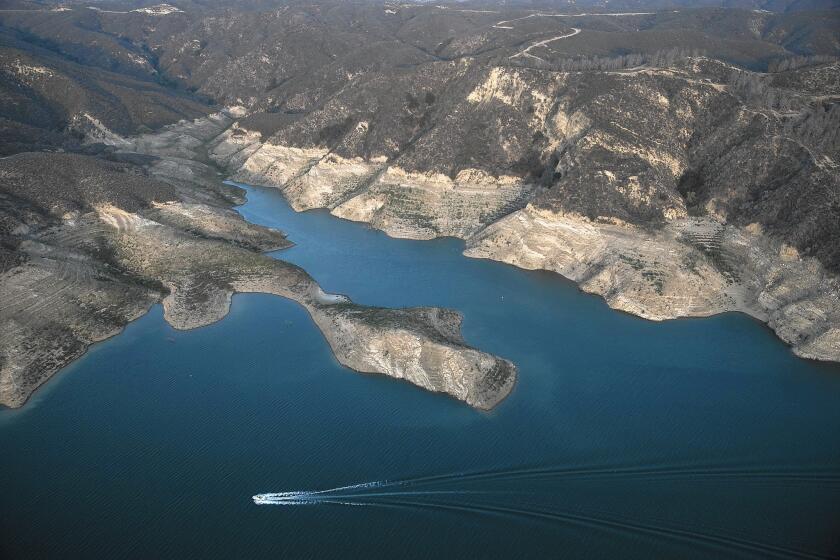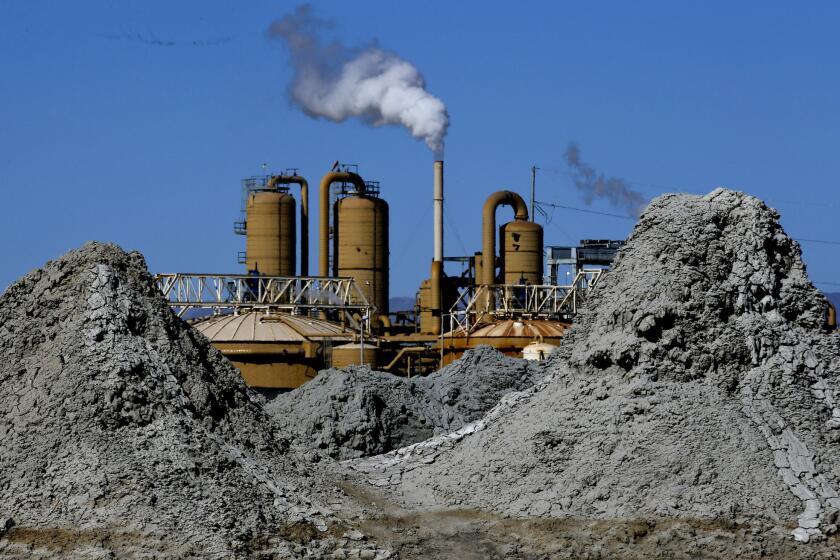California is a climate leader. But here’s why it needs to move even faster

- Share via
California is aiming to slash planet-warming emissions faster than ever over the next decade — and critics say state officials aren’t acting with nearly enough urgency.
The Golden State reached its 2020 climate change goal four years early, bringing economy-wide emissions back down to 1990 levels without most Californians noticing that anything was different. But the state’s next target, a 40% reduction in climate pollution by 2030, will be a much bigger lift.
A recent report from the research firm Energy Innovation found that the state must cut emissions nearly twice as quickly over the coming decade as it did during the last one, and that current policies won’t get the job done. The think tank Next 10 reached a similar conclusion, finding that the state is on track to meet its 2030 target three decades late.
Despite those findings, the California Public Utilities Commission is considering a proposal to cut power-sector emissions by just 25% during the 2020s, a slower pace than during the previous decade. Commission staff also studied a plan that would aim to cut climate pollution in half, before recommending the less aggressive target.
Climate advocates are alarmed, saying the regulatory agency is poised to let the transition to cleaner energy sources keep chugging along at an unacceptably slow pace. Commission staff say their preferred plan will already be plenty difficult, requiring clean energy infrastructure to replace fossil fuels at an unprecedented speed and scale.
The debate reflects a growing tension between the physical reality of the climate crisis and the difficulty of moving fast enough to meet the challenge — even in California, a leader in the climate change fight.
In the meantime, wildfires are worsening, sea levels are rising and heat waves are getting more extreme.
“We need to get this right. We need to set ourselves on the right path,” said Deborah Behles, an attorney representing the California Environmental Justice Alliance.
The 2020s could be a make-or-break decade. Scientists have found that global emissions must fall to zero, or close to it, by 2050 for humanity to have a chance of avoiding the worst effects of a warming planet. Hitting that midcentury target will be much harder if pollution levels don’t decline steeply over the next 10 years.
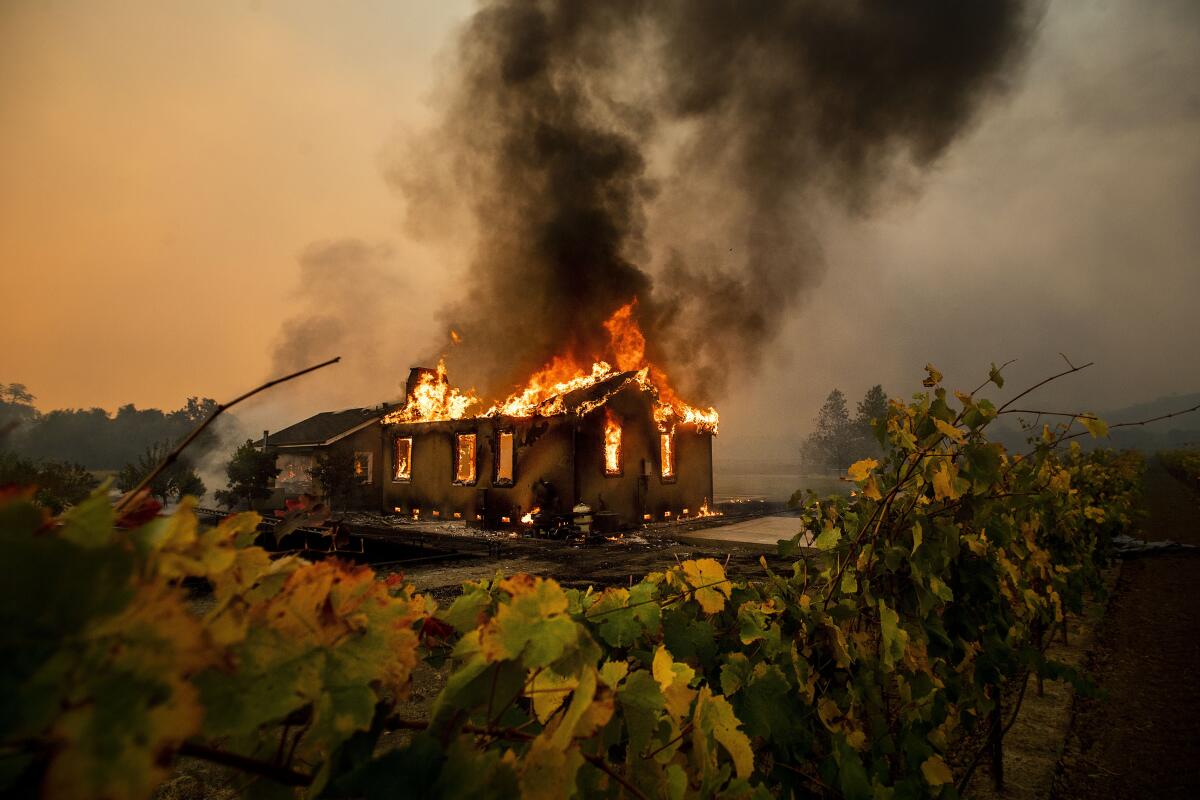
What happens in California could have an outsized effect globally. State policymakers are trying to show the world that planet-warming emissions can be slashed quickly and cheaply, in hopes of motivating other states and countries to follow its lead.
“If California faltered, global efforts to reduce [greenhouse gas] emissions would be dealt a major setback,” Energy Innovation wrote in its January report.
The San Francisco-based research firm used its Energy Policy Simulator, an open-source modeling tool, to determine whether California is on track to meet its 2030 target. Researchers concluded the state would fall short under current policies, reducing economy-wide emissions from 424 million metric tons in 2017 to around 284 million in 2030.
That would be a huge drop, but still about 25 million metric tons short of the 40% reduction called for by state law.
“Even under very optimistic assumptions about how effective the climate strategies are supposed to be, we see a high likelihood that they don’t put us on track to hitting the 2030 target,” said Chris Busch, Energy Innovation’s research director.
Your support helps us deliver the news that matters most. Subscribe to the Los Angeles Times.
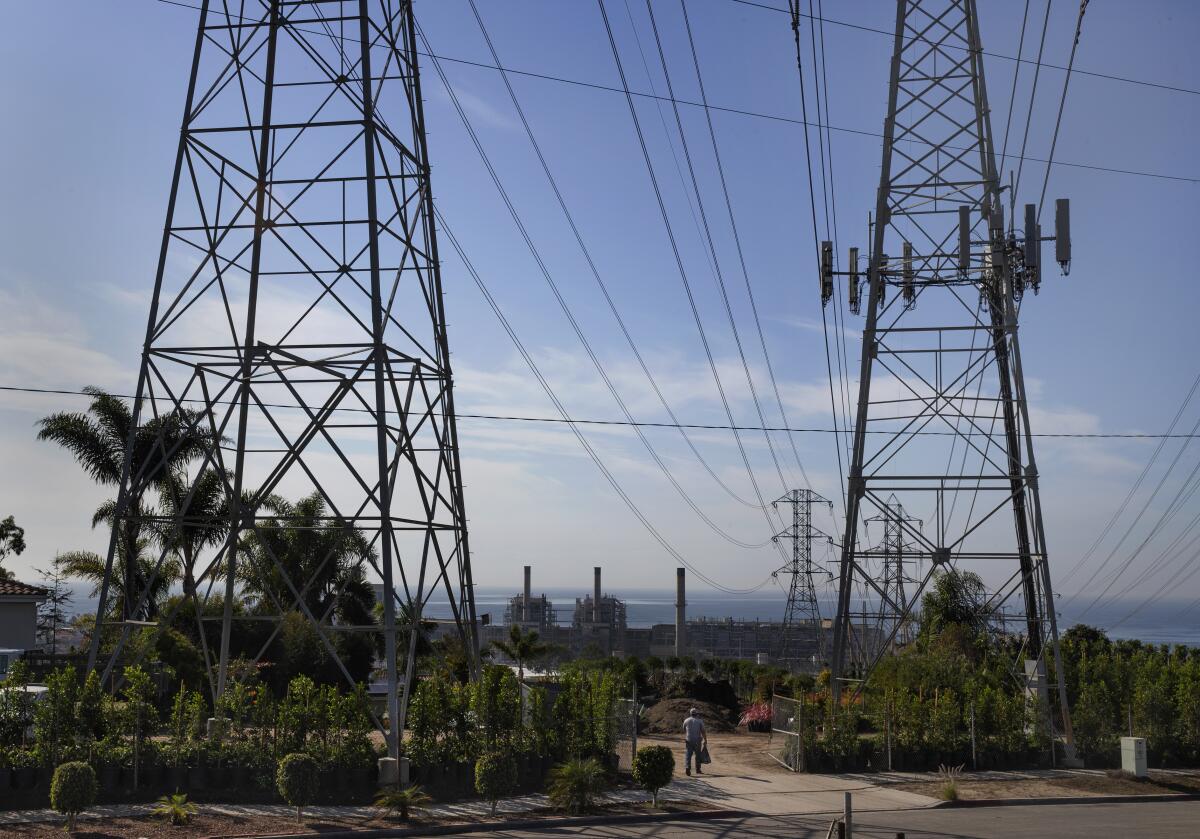
Energy Innovation’s modeling suggested six policies that Busch said would provide a relatively straightforward, low-cost path to bridging the gap. One of those policies is ratcheting up California’s renewable energy supply more quickly — the issue currently being debated at the Public Utilities Commission.
Commission staff are recommending that power-plant emissions fall from 62 million metric tons in 2017 to 46 million in 2030. That would be roughly in line with electricity providers getting 60% of their power from renewable sources such as solar and wind by the end of the decade, as required by state law.
But Energy Innovation is urging more ambition from the power sector, where emissions have fallen more consistently than they have in other parts of the economy. Ever-cheaper solar panels, wind turbines and lithium-ion batteries have had far more success displacing fossil fuels on the power grid than electric vehicles have had on the highway, for instance.
“Electricity is something we know how to do,” Busch said.
Lower power-plant emissions might also drive down emissions from other economic sectors.
That’s because state officials are counting on millions of Californians replacing their gasoline and diesel cars and trucks with electric vehicles, and swapping out natural gas-burning furnaces and stoves for electric heat pumps and induction cooktops.
The cleaner the electricity that supplies those new cars and appliances, the less they’ll pollute the climate.
Energy Innovation recommended a 2030 emissions target of 38 million metric tons for the power sector, which corresponds to a renewable energy mix of about 67%. Environmental advocacy groups and clean energy companies have pushed the Public Utilities Commission to adopt an even more ambitious goal of 30 million metric tons.
Ed Randolph, director of the commission’s energy division, defended the less aggressive target selected by agency staff.
Requiring more than the 60% renewable energy mandated by state law, Randolph said, could cause electricity prices to rise more than necessary. Energy affordability is a growing concern for lawmakers, in part because utility investments to reduce the risk of wildfires are expected to send California’s already high electricity rates even higher.
“We balanced the factors that we’ve got to balance, which is: How do we get to our 2030 targets while maintaining reliability at the least possible cost,” Randolph said.
Randolph also said reducing power-sector emissions to 46 million metric tons will be more than challenging enough, requiring the construction of 23 gigawatts of new solar farms, wind turbines and battery storage over the next decade. That’s roughly the size of California’s entire renewable energy fleet today.
Reducing greenhouse gas pollution to 30 million metric tons, the commission found, would require roughly twice as much new solar power and battery storage, and three times as much new wind power, as the less-aggressive scenario.
“No matter what you pick, you’re on a very dramatic decline in emissions,” Randolph said.
Energy companies are scrambling to build ‘pumped storage’ projects to complement solar and wind farms. Environmentalists are concerned.
The five-member Public Utilities Commission is scheduled to vote on the staff proposal March 26. A coalition of environmental advocacy groups sent a letter to Gov. Gavin Newsom on Wednesday urging him to intervene at the commission.
“Your leadership is critical; even with the many other high profile energy matters on your desk, California’s role as a clean energy leader will be tarnished if we do not get this right,” the groups wrote.
Mark Specht, an energy analyst at the nonprofit Union of Concerned Scientists, said in an interview that deeper emissions reductions wouldn’t be enormously more expensive. By the commission’s own estimation, the goal preferred by environmentalists would cost around $2.4 billion more per year by 2030 than the goal selected by commission staff — a tiny fraction of the tens of billions of dollars Californians spend on electricity every year.
The middle-ground emissions target recommended by Energy Innovation would cost about $1.1 billion more per year by 2030 than the commission staff recommendation.
“The investments that would need to be made to get to lower emissions targets are not massive in the grand scale of things,” Specht said.
Randolph emphasized that the Public Utilities Commission will revisit the end-of-decade emissions goal in two years, and can move the number downward then if needed.
But Danielle Osborn Mills, California director of the American Wind Energy Assn., said there’s upside to setting a stronger target now rather than later.
The kinds of infrastructure the state might need to cut emissions more dramatically — such as offshore wind farms or long-distance power lines — can take many years to permit, finance and build. The longer officials wait to signal to energy companies that those projects are needed, the less likely they’ll be ready by 2030.
“What I worry about is changing the target after a few years,” Osborn Mills said.
After years of playing third fiddle to solar and wind power, new geothermal plants are finally getting built.
Building the clean energy infrastructure needed to reduce emissions to 30 million metric tons would be “very ambitious,” said Wade Schauer, a Sacramento-based researcher at the energy consulting firm Wood Mackenzie.
Schauer said it’s “extremely difficult” to build new wind turbines in California because of what he described as NIMBY-style opposition. He also noted that San Bernardino County has severely restricted new solar development, and that concerns over the environmental impacts of sprawling solar farms are common.
“The transmission lines to connect this much solar will face public opposition as well,” Schauer said in an email.
The California Air Resources Board, the state’s top climate regulator, says cutting power-plant emissions to 46 million metric tons by 2030 should be sufficient.
But Rajinder Sahota, chief of the Air Resources Board’s industrial strategies division, noted that the agency will revisit its statewide climate plan in 2022, and could set a lower target for power plants then. It depends on how things go in other sectors, particularly transportation, which is responsible for 40% of California’s greenhouse gas emissions.
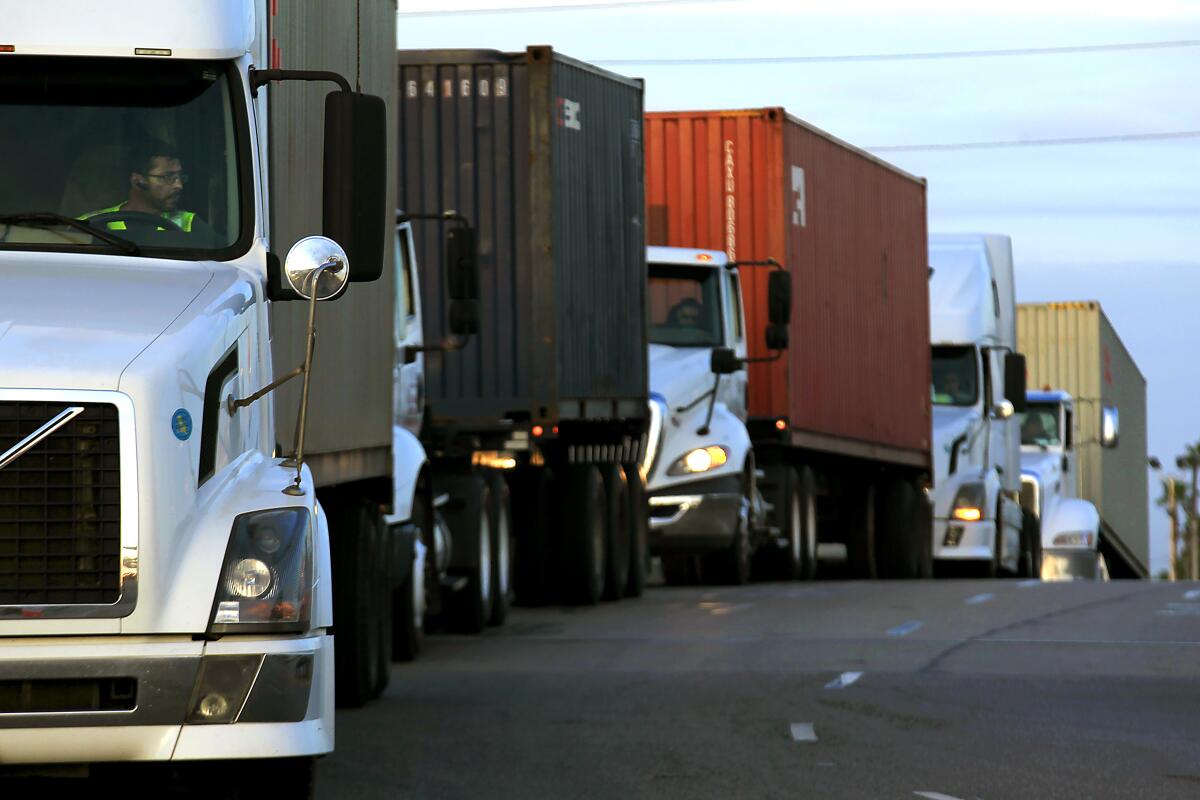
On the transportation front, Energy Innovation advised state officials to require that 80% of new cars and light trucks sold in 2030 be zero-emission vehicles, up from today’s mandate of 15% by 2025. The research firm suggested several other policy changes, including reforms to cap and trade, a controversial market-based program for reducing emissions.
Sahota said the Air Resources Board’s modeling shows that existing policies are capable of reducing greenhouse gas pollution 40% by decade’s end — at least in theory.
She also acknowledged that California needs to cut emissions twice as fast in the 2020s as it did in the 2010s. And that’s a tall order.
“We all agree that we need to do more, and do it faster,” Sahota said.
